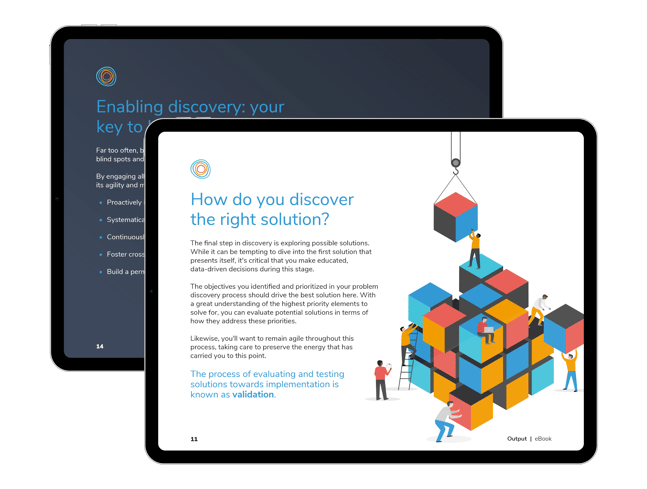Have you ever heard the adage about being too close to a problem? That when you experience it regularly and think you have a system in place to solve it, you sometimes can't see another solution because that's "how it's always been done?"
Innovation keeps you on the cutting edge, whether you're adopting new technology, improving your products or changing company systems and processes. But not all innovation is created equal.
While much has been written about the distinction between various types of innovation, most of these distinctions are academic and confusing. What it all boils down to is: what problems should I prioritize and how do I solve them?
By thinking in terms of the horizon framework, you can properly diversify and prioritize your innovation efforts to solve your most high-value problems. Short-term, mid-term, and long-term goals are all important to have, but knowing which ones to approach first — and how — is key.
Horizon one (H1) innovations are your short-term innovation goals, most often correlated with continuous improvement. People involved in continuous innovation typically have a good understanding of their problem; the real challenge is figuring out the “how": how to solve it, how to implement the solution and how to make sure these changes align with company objectives.
An example of H1 innovation would be creating a new internal document that improves the sales to services handoff. This project could move fairly quickly by bringing together key stakeholders from both teams to define their goals, creating the new document and developing a rollout plan.
This example demonstrates how accessible — and necessary — it is for everyone in an organization to identify and solve problems in their role, whether they're backend product developers, customer success representatives or project managers. The risk for H1 innovations is low, and the rewards are quickly tangible — particularly at scale. These quick wins also help empower your team and build momentum to tackle larger more ambitious innovations. The highest proportion of your resources should be allocated to H1 innovations.
Horizon two (H2) innovations are usually born out of an external trigger — competitors, consumer attitudes, technology changes, etc. The difference from H1 is that they can't be done overnight and the runway is a little longer (2-3 years), thereby increasing the risk. For example, you might offer a more premier version of your services after identifying an up-market opportunity — but to do so, you'll need to scale up your team, identify this audience's needs, modify your product offering, etc.
Innovations that occur in the mid-term are often adapted from other, adjacent industries and applied to your particular product and situation — so staying up to date on these changes is going to give you a head start. The risk should be mitigated by breaking the project down into smaller, actionable sprints and experiments that help mitigate risk and inform the larger objective towards implementation at scale.
Be mindful not to allocate all of your innovation resources to these projects, however. The ideal balance involves the largest proportion of resources allocated to H1 innovations and a declining allocation to H2 and H3 innovations in a ratio that makes sense for your organization. If you can find H1 implementations that inform a larger H2 or H3 initiative, it's a win-win and makes a ton of sense to prioritize.
Projects in the third horizon of innovation (H3) have a long runway (3 or more years) and involve lots of risk. These include significant disruptions that will change your entire business model — like Netflix switching from physical DVDs to a fully digital streaming service.
H3 involve intense research and experimentation with a long-term commitment to discovering and solving the challenge at hand. H3 innovations are often in direct response to changing technology, new industry competition or evolving consumer needs — all of which require big-picture thinking.
The risk of revolutionizing with H3 innovations is high, and while it's tempting to allocate resources to that big, groundbreaking idea, it's not always smart to put the time into those types of changes until you’ve built your foundation. As with H2 innovations, H3 projects should be broken down into smaller, actionable sprints and experiments. To the extent that you can find H1 implementations that inform a larger H3 initiative it's a win-win. These sprints will serve as your roadmap toward your H3 goal, providing small wins, promoting learning and reducing risk along the way.
Despite the many types and definitions of innovation in the world today, your main concern shouldn't be what type of innovation you need to use, it should be identifying the problem you need to solve and where it fits in your horizons framework so that resources are appropriately used.
Wondering which problem your business should tackle next? Our guide, Enabling Discovery: How to Find Business Problems Worth Solving, shows you how to identify, prioritize and solve problems at scale, leading to cross-functional, innovative solutions that drive your business forward. Download your free copy today!

170 - 422 Richards Street
Vancouver BC V6B2Z4